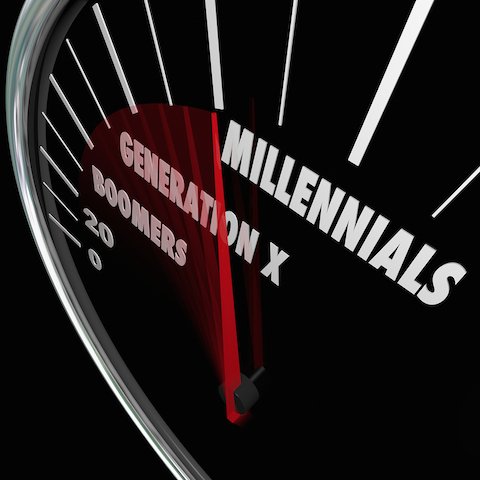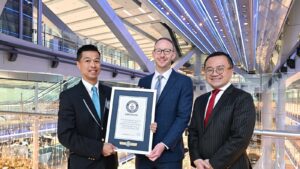American International Group, Inc. (NYSE: AIG), whose domestic life insurers are leaders in the U.S. life insurance market, recently shared 12 tips for generational outreach and announced the launch of Generation Station, a new online tool to help financial professionals pinpoint, in mere seconds, potential types of life insurance solutions based on a client’s age, gender, and just a few other attributes.
“According to LIMRA’s most recent U.S. life insurance ownership study, more than 37 million American families are completely uninsured and an estimated 60 million American households need additional life insurance,” said Kirsten Lees, Vice President of Channel Marketing, Life and Retirement, at Houston-based AIG. “To help financial professionals fill the gap, we’re providing the new online tool along with data, insights and talking points they can use to efficiently tailor approaches to each client in any generation.”
Industry professionals may use the Generation Station tool to supplement knowledge gleaned from their own comprehensive financial assessment of each client.

Lees told Insurance Forums that the new tool enables financial professionals to be able to “fill in the blanks” and build a better-informed approach, based on the person’s generation and life stage. “By inputting basic details like age, career, relationship status, and income, users can quickly and easily generate custom reports, complete with communication strategies, relationship-building tips, and client-specific outreach tactics,” Lees said.
The first step in narrowing it down to just a few questions for the Generation Station tool, Lees said, was to identify common life insurance needs, such as paying off a mortgage, providing an income to survivors, and supplementing retirement income.
“Then, for each need, key life-stage triggers were listed. For example, a need for life insurance to pay off a mortgage may not exist if a person is not married or with a life partner; hence, the ‘married/committed relationship’ question,” Lees said. “A college-funding need would be present only if the client has kids of particular ages. A retirement supplement only makes sense if the client earns a certain amount of money and is not just getting started in his or her career. So, the questions were derived based on the identified life insurance needs.”
Lees added that this type of tool can be particularly useful for financial professionals looking to connect with Millennials. “The oldest Millennials are turning 37 this year, but the average age of an insurance agent in the U.S. was 59 four years ago, according to McKinsey & Company. Considering differences in communication preferences between Millennial clients and older financial professionals, opportunities clearly exist to enhance understanding of how best to engage with this key group of consumers,” Lees said.
To further support outreach and service by distribution partners, AIG offers the following tips, with the caveat that definitions of generational boundaries vary by source and, regardless of any labels that may seem to fit, every client deserves a customized approach.
The tool and related resources are available at www.aig.com/GenerationMatters.
Millennials (born 1980-2000)
- Go digital. Acknowledge preferences to access information, people and products online.
- Make it quick and easy. Provide Millennials with time-saving resources they can access virtually anytime, anywhere, such as online calculators, checklists and quoting tools.
- Include the client’s inner circle. Focus on individual needs while understanding that Millennials may crowdsource for information.
- Be transparent. Having grown up in a time when fact-checking can happen almost instantaneously, Millennials can be quick to spot inauthenticity. To help win them as clients and referrals, be yourself.
Generation X (born 1965-1979)
- Initiate research. Gen Xers have had ample time to learn how to make informed purchasing decisions. Substantiate your claims with research and stats from a variety of nonbiased sources.
- Give control. Many Gen Xers are leaders in both the home and the workplace. Allow them to be in the driver’s seat and not in a position to feel painted into a corner. Consider multiple choices and worst-case scenario options that offer clients a way out.
- Be succinct. Gen Xers are known for their work ethic and some also serve long hours as a primary caregiver to an aging parent. Rather than giving a lengthy pitch, focus on results.
- Remain connected. Millennials aren’t the only consumers who research their purchases online. Use technology with Gen Xers to empower decision-making.
Baby Boomers (born 1946-1964)
- Meet one-on-one. Respect client needs for face-to-face interactions. Create in-person opportunities to get to know as much as you can about each prospect – his or her family, interests, birthday and more.
- Show professionalism. Boomers have reached the age by which they’ve likely earned key credentials and achievements, so acknowledge theirs and share your own, as well as those of affiliated organizations.
- Think big picture. Boomers face potentially long retirements. Recommend a tailored, long-term plan that is specific to each client’s unique needs and situation.
- Focus on the team. In the classic “we’re in this together” spirit, concentrate on common goals and how your recommendation will add value – you are on their team.
To utilize the Generation Station tool and access additional resources to help serve individual generations successfully, visit www.aig.com/GenerationMatters. For more information about AIG, visit www.aig.com.













